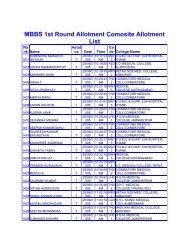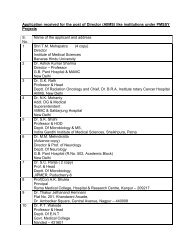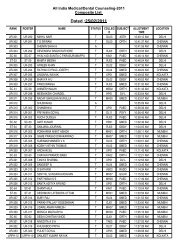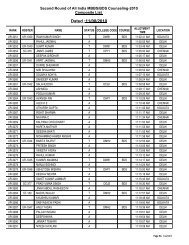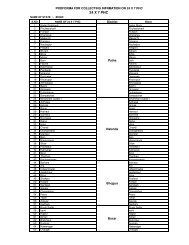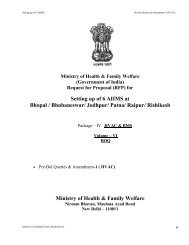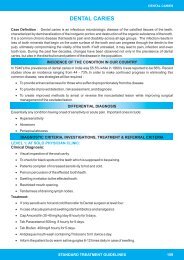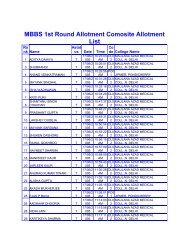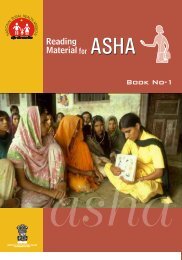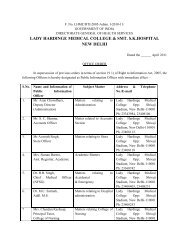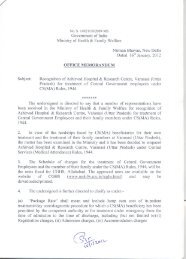manual of methods of analysis of foods - Ministry of Health and ...
manual of methods of analysis of foods - Ministry of Health and ...
manual of methods of analysis of foods - Ministry of Health and ...
Create successful ePaper yourself
Turn your PDF publications into a flip-book with our unique Google optimized e-Paper software.
METALS<br />
Procedure:<br />
Weigh accurately a suitable quantity <strong>of</strong> the well mixed sample in a tared<br />
silica or platinum dish. Heat first by means <strong>of</strong> a s<strong>of</strong>t flame to volatilise as<br />
much organic matter as possible, then transfer the basin to a temperature<br />
controlled muffle furnace. Keep the muffle at about 300ºC. Once the<br />
material is dry <strong>and</strong> charred, the temperature is allowed to rise to 450ºC <strong>and</strong><br />
ash at this temperature till no carbon remains. If it is suspected that all<br />
carbon has not been removed, cool the ash, add about 1 to 2 ml <strong>of</strong> conc.<br />
nitric acid, evaporate to dryness <strong>and</strong> again heat in muffle furnace. After<br />
ashing is complete, remove the dish from muffle furnace, cool, cover the<br />
dish with watch glass, <strong>and</strong> add gently 40 to 50 ml <strong>of</strong> hydrochloric acid (1 +<br />
1). Rinse down watch glass with water <strong>and</strong> heat on steam bath for 30<br />
minutes, remove the cover <strong>and</strong> rinse. Continue heating for another 30<br />
minutes. Add 10 ml <strong>of</strong> hydrochloric acid (1+1) <strong>and</strong> water to dissolve the<br />
salts. Filter into a 100 ml volumetric flask using Whatman No. 44 filter<br />
paper. Wash the residue <strong>and</strong> basin twice using dilute HCl. Make up to<br />
volume with water.<br />
For food stuffs <strong>of</strong> low ash or high chloride content <strong>and</strong> where the loss <strong>of</strong><br />
heavy metals by volatilisation is suspected, add about 20 ml <strong>of</strong> dilute<br />
sulphuric acid (1+1) (taking care to wet all the sample in the dish) <strong>and</strong><br />
evaporate slowly at around 100ºC <strong>and</strong> then ash in the normal way.<br />
The commonly used ashing aids are nitric acid, dilute sulphuric acid,<br />
magnesium nitrate, magnesium acetate, sodium carbonate, etc.<br />
5



